How To Air-Dry Hair – A Quick Guide For All Types
Air-drying your hair can transform your looks - provided you know how to do it right.
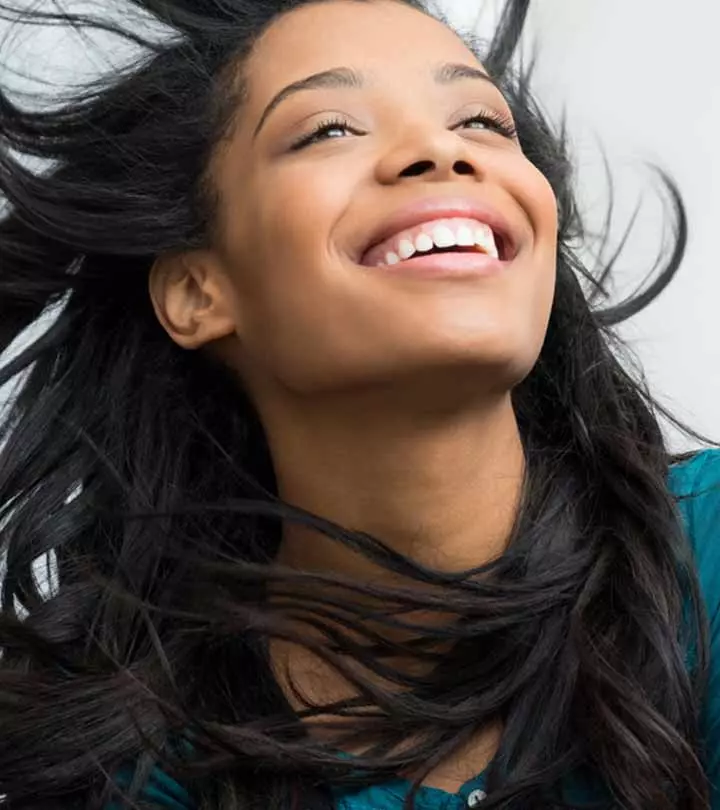
Image: Shutterstock
Drying hair seems like a deceivingly simple task. You just need to let your hair down, right? Not so much. If you leave your hair sopping wet, by the time your hair air-dries, it will be a jungle of frizz and mess.
The perfect air-drying technique requires the right products, tools, and application techniques according to your hair texture, length, and climate. In this comprehensive guide, we break down how to air-dry your hair according to various hair textures and types. Scroll down to learn more.
In This Article
The Pros Of Air-Drying Your Hair
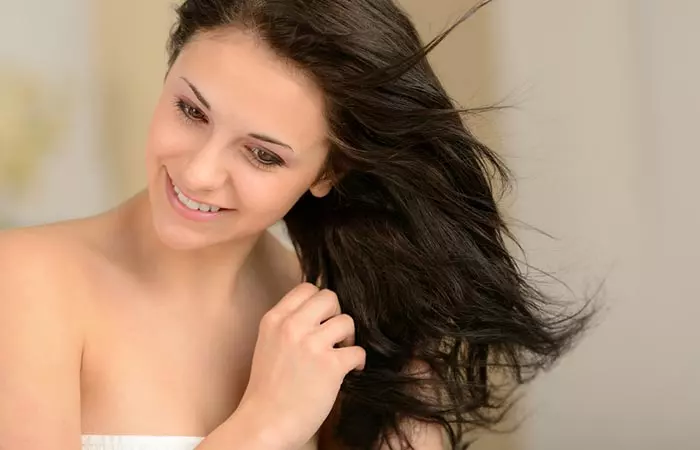
Air-drying is considered the simplest and healthiest way to dry your hair for the following reasons:
- It Prevents Heat Damage: Air-drying gives your hair a much-needed break from the blow dryer and other heat styling tools.
- It Helps Retain Moisture: Heat styling often dries out the strands. Air-drying prevents moisture loss from your locks, keeping them hydrated for long.
- Prevents Hair Breakage: Blow-drying involves applying concentrated heat on a hair section during vigorous combing. This often stretches the hair shafts, causing breakage. This leads to hair shedding. Air-drying does not involve such aggressive techniques.
 Trivia
TriviaBest of all, air-drying saves you the time and effort that go into blow-drying. That said, you will still need to invest in a proper aftercare routine for styling your hair. But before that, it is essential to understand which types of hair are ideal for air-drying.
Key Takeaways
- Air drying your hair can prevent the damage often incurred from heat styling tools.
- It helps lock in more moisture into the strands and prevents them from becoming brittle.
- For natural curls, one has to apply the right curl-defining products on wet hair and scrunch or braid it before air drying.
- For drying straight hair, one has to use a microfiber towel to remove excess moisture and apply a mousse to prevent unwanted frizz.
Which Hair Types Are Ideal For Air-Drying?
Contrary to popular belief, air-drying does not suit every hair type. Certain hair textures and hair thickness have an undue advantage, including:
- Fine Hair
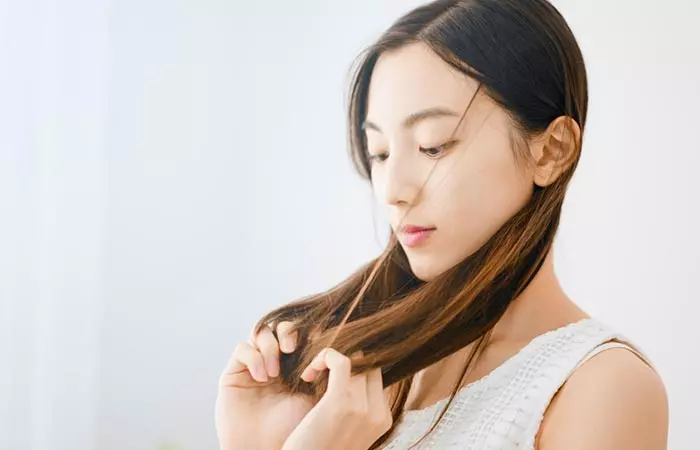
Very thick and dense hair may end up taking the whole day to air-dry. If you are blessed with finer locks, air-drying your hair is easier.
- Natural Textures And Waves
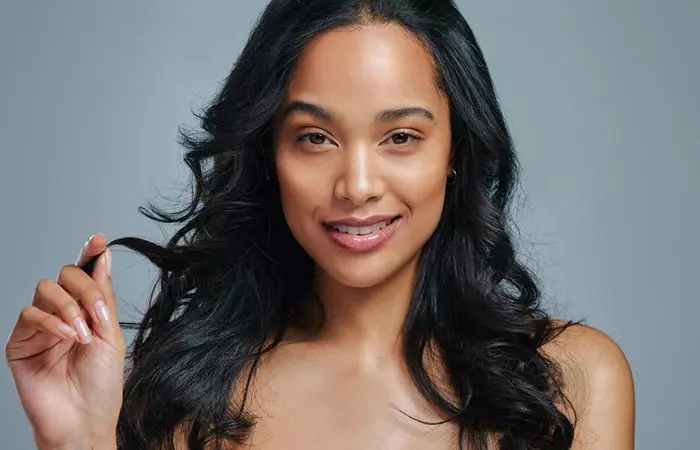
Air-drying can enhance the beauty of naturally wavy hair and improve its texture. It does not weigh the hair down and adds definition to your waves. You can now achieve perfect tousled hair with the right hair-washing and hair-detangling techniques.
- Undamaged Hair
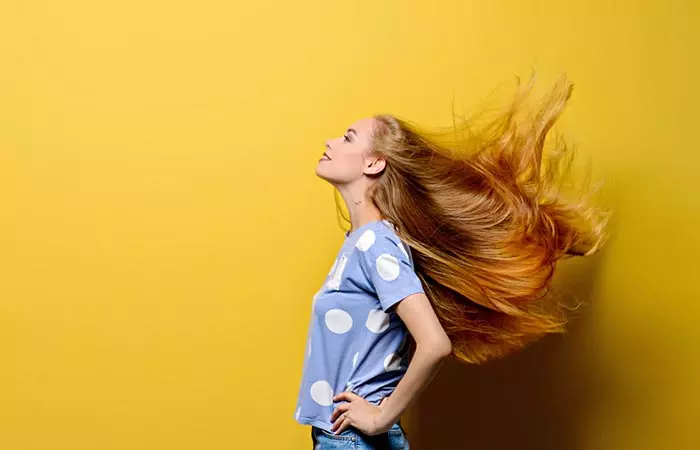
If your hair is relatively undamaged, smooth, and in good shape, your hair will air-dry in the best possible manner.
Doro Cubillo, a YouTuber, shared a detailed air-drying routine for hair in a video. Describing the styling process, she advised against rough towel-drying, recommending gentle techniques to prevent breakage and frizz. She showed how her hair looked the next day, saying, “It is very soft it doesn’t have any frizz and it’s super manageable and the most important thing is that we did not use any heat (i).”
If your hair falls in the above categories, then you should consider drying your hair naturally. But to get the best frizz-free results, you should know how to air-dry your hair according to your hair texture. The following section will help you out.
How To Air-Dry Your Hair According To Hair Type
1. Curly Hair
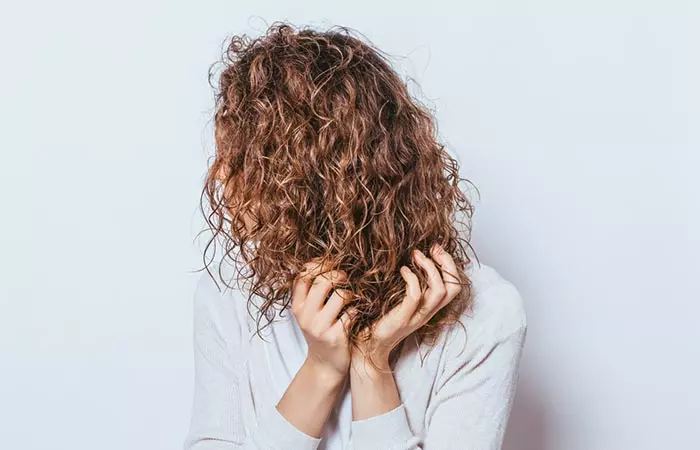
For those wondering how to dry curly hair effectively, these methods and tips ensure your curls stay defined and frizz-free.
Method
- Wash your curls with a sulfate-free shampoo and condition them.
- Squeeze out the excess water with a microfiber towel.
- Flip your hair and part it into four sections.
- Apply a lightweight hair gel/oil to each hair section.
- Scrunch your hair up to define your curls.
Top Hacks For Curly Hair
- Pick Safe Products
Choose the right kind of products like curl-defining creams, lightweight serums, hair gels, and curl-taming lotions.
Hair product recommendations for air-drying include moisturizing oils, plant butters, and other hydrating ingredients. However, avoid silicone-containing products as they may cause buildup.
- Maintain The Curls
Use the right curl definers on damp curls while air-drying curly hair to maintain their natural pattern. The right curl definers give your locks a more controlled look. Avoid thick and dense products. Follow proper hair maintenance tips and go for a co-wash to preserve your hair’s natural oils.
- Focus On Your Brushing Technique
Do not brush your curls in a downward motion. It will leave your hair with no room for any volume. Instead, brush your hair at a 90-degree angle off the hair scalp to preserve the fluff. Once completely dry, fluff the roots with a wide-toothed comb to lift them and add movement.
- Towel Dry Your Curls
Use a microfiber hair towel to prevent friction, hair breakage, and frizz.
2. Coily And Afro-Textured Hair
Method
- Apply a leave-in conditioner to your damp hair.
- Massage a few drops of coconut or jojoba oil throughout your curls and scrunch.
- Finish off with a curl cream and define the coils with your fingers to give them a corkscrew shape.
- Let your hair air-dry.
Top Hacks For Coily Hair
- Pick Nourishing Hair Oils
Use lightweight and moisturizing natural oils, such as olive, avocado, and Jamaican black castor oils
. Apply only a few drops to add shine and hydrate your coiled hair.
- Stick To An Aftercare Regime
Follow a dedicated aftercare routine. Start by applying a mixture of a leave-in conditioner and nourishing hair oil to damp hair. Finish off with a hair styling cream to define your curls.
If you want soft spirals on your thick coily hair, here is a weekly routine you should follow:
- Saturate your hair with diluted apple cider vinegar.
- Cleanse with a hair cleansing cream.
- Deep condition for about 15 minutes and put on a shower cap.
- Before styling, apply a lightweight daily conditioner from your roots to the ends.
- Apply a bentonite clay mask for thorough cleansing.
- Finish off with a natural styling gel that allows the coils to hold the shape.
- Let your hair air-dry.
- Braid And Twist Your Curls For Definition
Braid your hair, twist it into a bun, and clip it a couple of inches below the crown.
Braids offer hair protection and keep hair neat and tidy. This small effort gives your hair extra lift and adds more body to it. Alternatively, you can finger coil your hair for a more defined look.
If you want less hair volume, flatten your roots by making two loose braids. Shake it out after an hour for an unfussy look. Before untwisting your braids, apply a moisturizing mist. Finally, use a hair pick to fluff the roots gently.
3. Straight Hair
Method
- Wash your hair with a mild shampoo and conditioner.
- Towel dry your hair and apply a volumizing mousse evenly.
- Detangle with a wide-toothed comb
- Toss your hair back and forth, allowing it to settle naturally.
Top Hacks For Straight/Fine Hair
- No Touching
Avoid touching or playing with your hair while it is air-drying, or you will end up with frizzy hair.
- Use The Right Amount Of Product
Use just a pea-sized or dime-sized (as per the hair length) amount of the product and distribute it evenly. Otherwise, it may weigh your hair down.
- Add More Waves
To get soft waves framing your face, tuck a hair section behind the ears and clip it with bobby pins. As your hair air-dries, the pins will work to exaggerate the bend and give you enviable soft waves. Conversely, twist your hair into four buns before going to bed and wake up with soft, pretty waves around your face.
- Invest In A Hair Mousse
Use a lightweight texture-enhancing cream/mousse to minimize frizz, lift the roots, and prevent flyaways.
Always comb to distribute the product evenly and allow it to settle down. You can use a lightweight spray for an instant pick-me-up.
4. Wavy Hair
The following technique works particularly well for wavy hair, like the 2A type hair, which tends to have soft, loose waves that can be enhanced with a little bit of dedicated care.
Method
- Wash your hair with a lightweight hydrating shampoo and conditioner.
- Detangle with a wide-toothed comb.
- Squeeze out excess water with a microfiber towel and let your hair air-dry for 15 minutes.
- Mist on a salt spray (while it is damp) to volumize your hair and let it dry.
- Apply a styling cream and twist your waves in two-inch sections for extra definition and shine.
Top Hacks For Naturally Wavy Hair
- Braid Your Hair
To define your natural wave, loosely braid your hair before going to bed and clip it up into twists. This will also prevent your hair from puffing up. For beachy waves, mist your damp hair with a salt spray, make four loose braids, and allow them to air-dry.
- Use The Right Products
Hair protection during air-drying is essential to maintain good hair health. Buy a heavy curl defining cream for thick and wavy hair. Use hydrating shampoo and conditioner with ingredients like hyaluronic acid and natural oils.
- Minimize Frizz
Use a lightweight dry oil and follow up with a moisturizing leave-in conditioner or serum. You also can achieve frizz control for air-dried hair by using a wide-toothed comb to distribute the product evenly. This process also adds a glossy sheen to your hair. High humidity and air-dried hair share an unfavorable relation. If you live in a humid area, use a light-hold heat and humidity hair gel.
- Dry Your Waves Correctly
Never let wavy hair dry on its own. Use a microfiber towel to soak excess water and eliminate chances of frizz. Let it air-dry for about 15 minutes and shake it out.
In the next section, find the top tips and hacks to air-dry your hair minus the frizz.
Three Cardinal Rules Of Air-Drying Hair Without Frizz
Irrespective of your hair type, follow these three rules for perfect air-dried hair:
- Choose an appropriate conditioner and hair styling product. Avoid experimenting with products, and consult a hairstylist to pick the best products for your hair type.
- Use a blend of leave-in conditioners and lightweight hair stylers to define your natural waves and nourish your hair.
- Work out the quantity of product to use (based on your hair type).
 Quick Tip
Quick TipThese tips can help you retain hair definition. Not all hair types air-dry fast; some may take hours to dry. Find out why in the next section.
Why Does It Take My Hair So Long To Air-Dry?
Usually, it takes an hour or two for damp hair to dry completely. However, this time may vary depending on the hair length and porosity.
Highly porous hair can take an entire day to dry. It’s because porous hair quickly soaks water and takes longer to dry. Usually, curly, kinky, and coily hair types are highly porous and take longer to dry.
Infographic: Easy Steps To Air-Dry Your Hair Based On Its Unique Texture
Are you tired of the endless blow drying and heat styling routines? Well, it’s time to give your hair a break and embrace its natural texture. Air-drying is a simple and effective way to achieve gorgeous locks without damage. But, did you know that different hair textures require different air-drying techniques? Check the infographic below for some easy steps to air-dry your hair according to its unique texture! Illustration: StyleCraze Design Team
Air-drying your hair reduces the risk of heat damage, improves moisture retention in your hair, and prevents hair breakage. Fine hair, naturally textured hair, wavy hair, and undamaged hair are best suited for the air-drying method over other hair types. With the right hair products and techniques, you can air-dry your hair without worrying about frizz or manageability. So, scroll back up and read these useful hair towel-drying tips to learn how to air-dry your hair effectively. As you use these tips, you will notice the improvement in your hair texture, feel, and appearance.
Frequently Asked Questions
How do you air dry your hair without touching it?
You don’t have to touch your hair while air drying it. You can leave your hair loose and allow it to dry naturally thanks to the heat from the sun and the air that passes through it.
Does air drying hair make it curly?
No, it does not but it can enhance existing curls. Further, there are many natural ways to curl your hair. If you want to enhance your curls without using heat styling tools, apply a curl-defining cream or serum on damp hair. Then separate your hair in sections and scrunch and hold each section for a few minutes. Hair scrunching in between air-drying helps define the curls and enhance hair bounce. You can also braid your hair and let it air dry to form curls.
How do I air dry my hair without frizz?
When you air dry hair, some moisture in your strands evaporates and may lead to dry and frizzy hair. To prevent your hair from getting frizzy when you air dry it, use a hydrating or anti-frizz serum. Let your hair dry about 70% and spritz on a hydrating serum or mist over your hair. Allow your hair to air dry completely.
How to air dry hair without making it look greasy?
If you wash your hair thoroughly, your hair will air dry without looking greasy. If you have oily hair or an oily scalp, use a clarifying shampoo that will remove excess oil.
How long to air dry hair before blow drying?
You should allow your hair to air dry until it is about 70% dry, meaning it should be more damp than wet. If you are wondering how to blow dry your hair, remember to keep your blow dryer about 15 cm away from your hair to minimize heat damage while drying it effectively.
Should you air dry your hair with cold air or hot air?
Cold air might freeze your strands and make them brittle. Air drying your hair in cold climatic conditions might also leave you with a cold. It’s better to air dry hair when the sun is out and the weather is warm.
What common mistakes should I avoid when air-drying my hair?
Using rough towels that cause friction, overloading your hair with products, and rushing the drying process are some common mistakes. Remember that choosing the right techniques can make your hair healthier and easier to manage.
Illustration: How To Air-Dry Hair - A Quick Guide For All Types
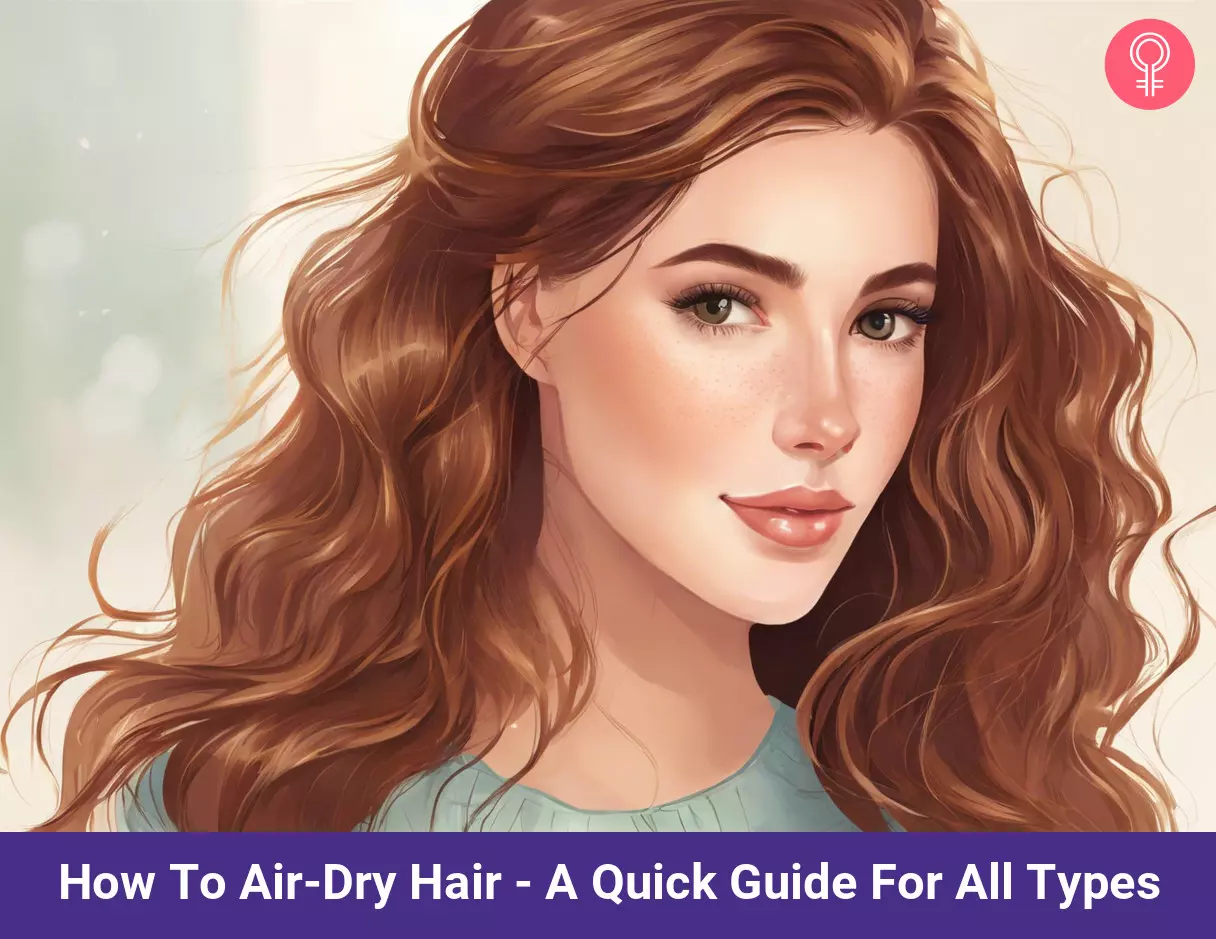
Image: Stable Diffusion/StyleCraze Design Team
Learn how to air-dry your relaxed hair for the best results. Get tips on the best products to use and techniques to achieve beautiful, healthy hair. Scroll down to watch the video.
Personal Experience: Source
StyleCraze's articles are interwoven with authentic personal narratives that provide depth and resonance to our content. Below are the sources of the personal accounts referenced in this article.
i. How to MASTER AIR DRYING HAIR without frizz *step by step*https://www.youtube.com/watch?v=cUKAwFwDTfc
Read full bio of Dr. Shruti Chavan
Read full bio of Ramona Sinha
Read full bio of Eshna Das
Read full bio of Monomita Chakraborty






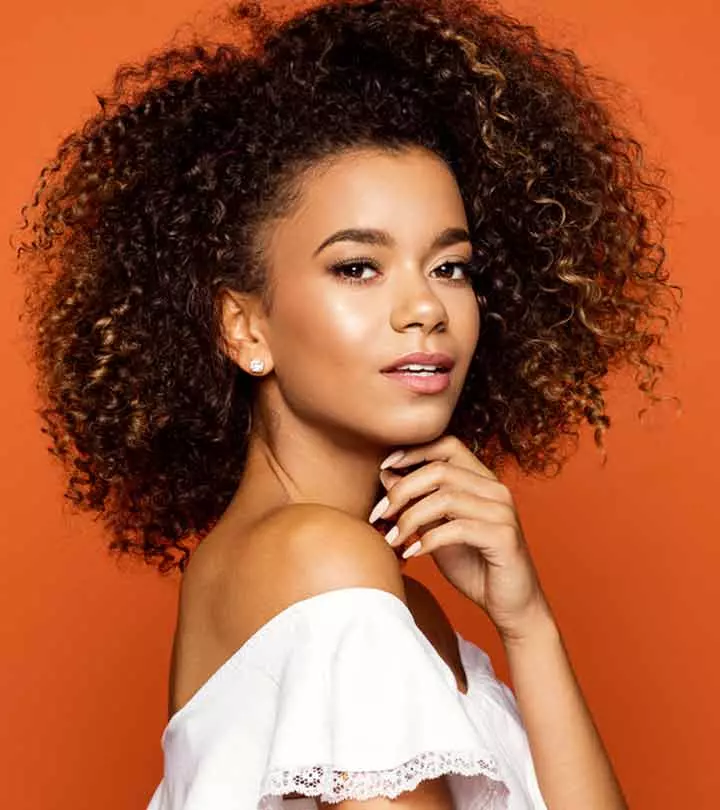
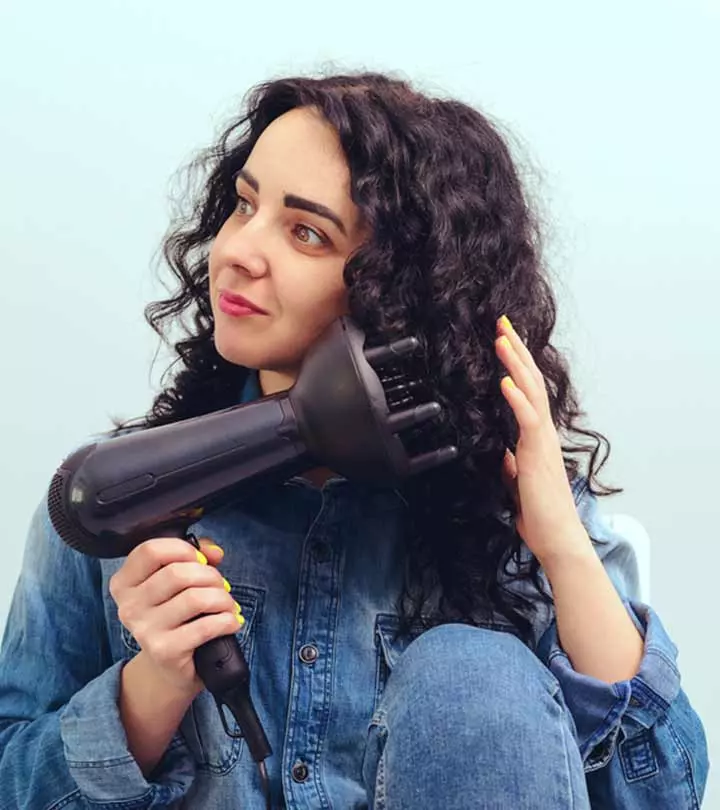
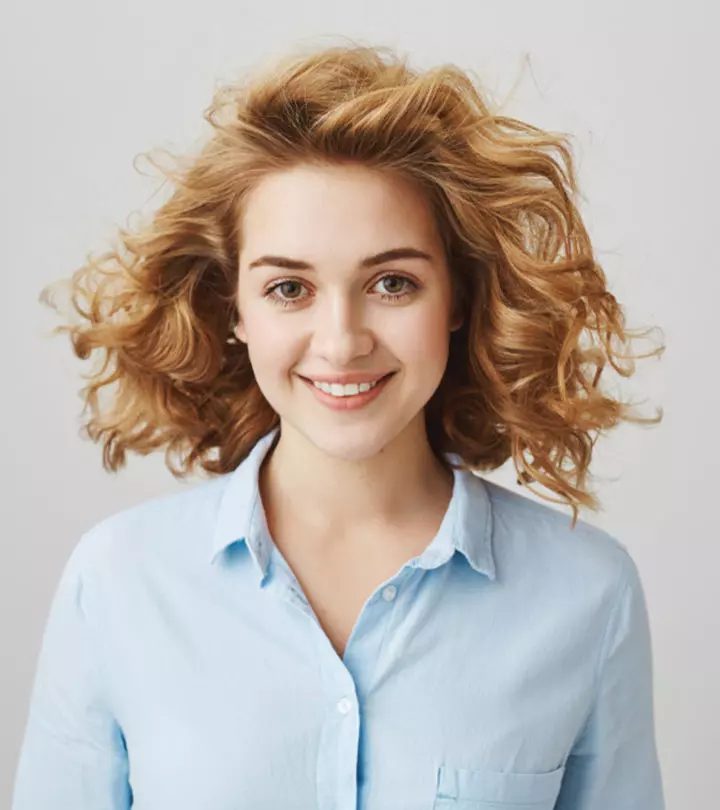

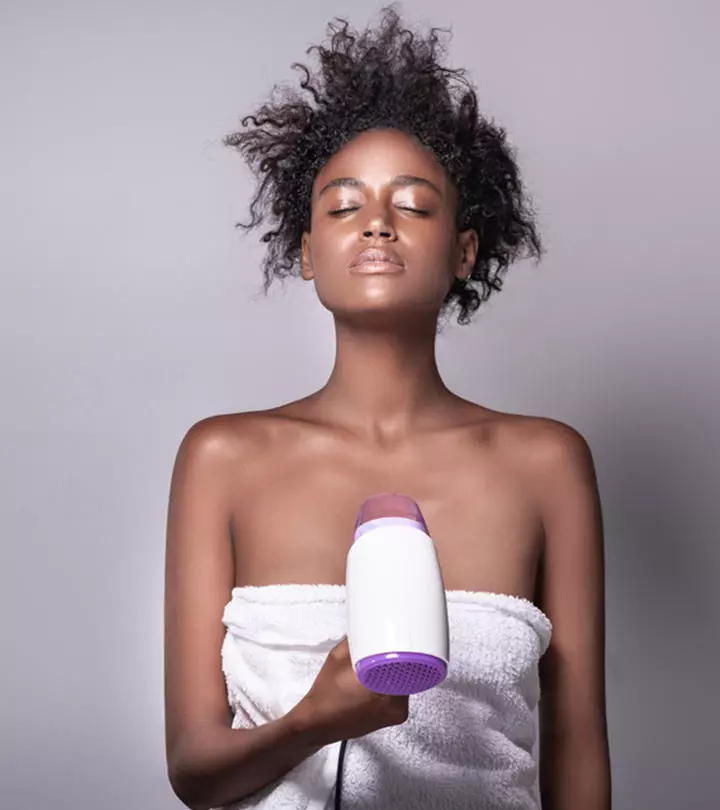
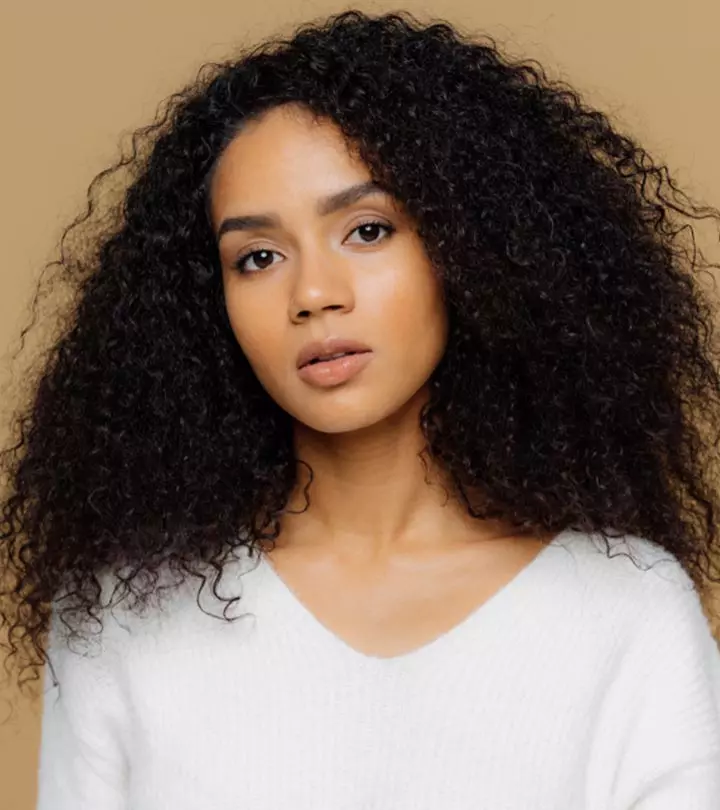
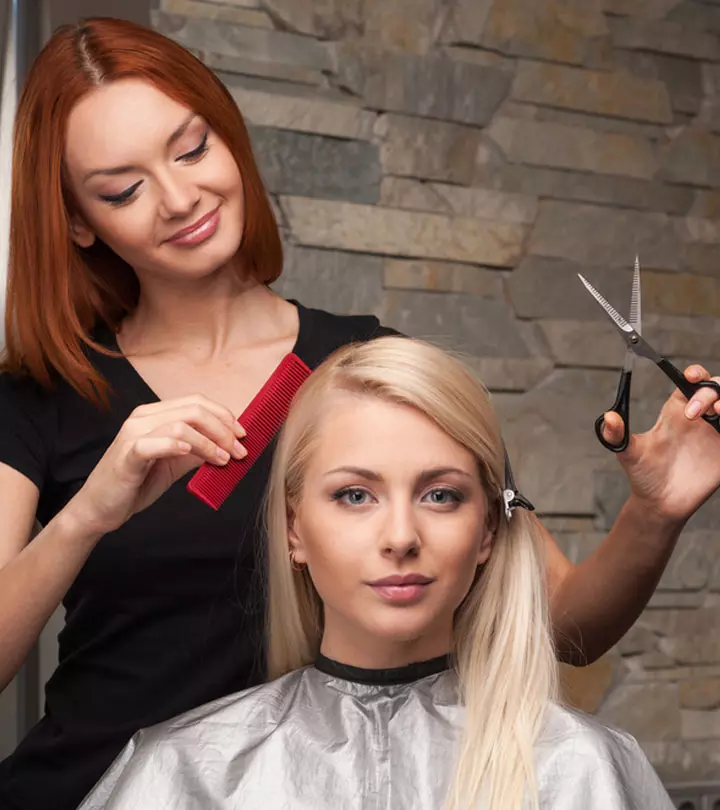
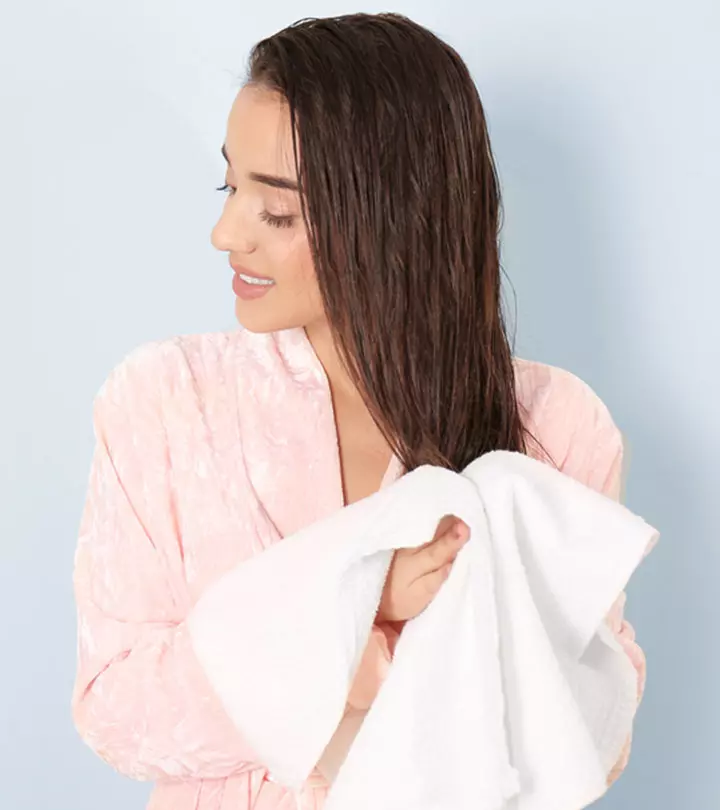
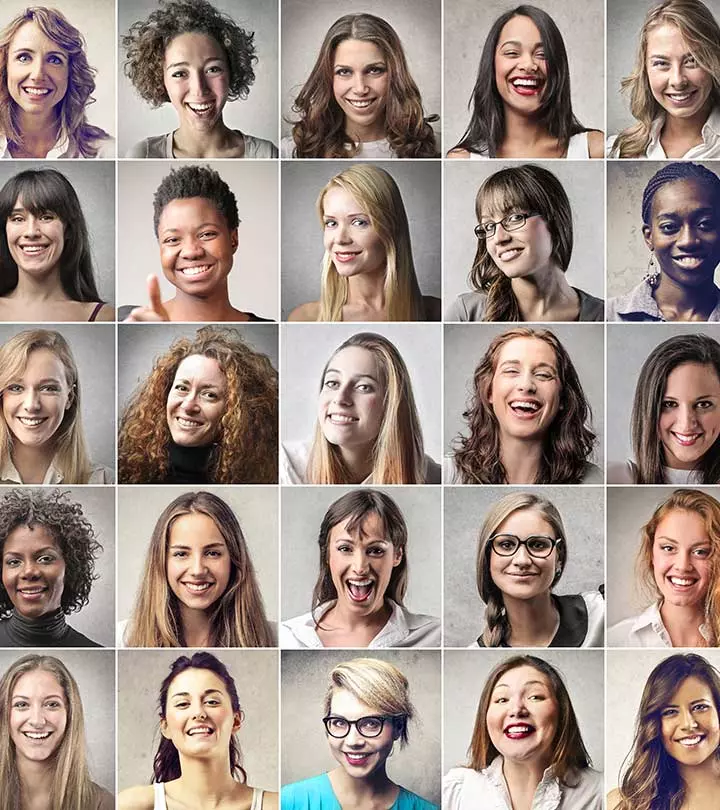
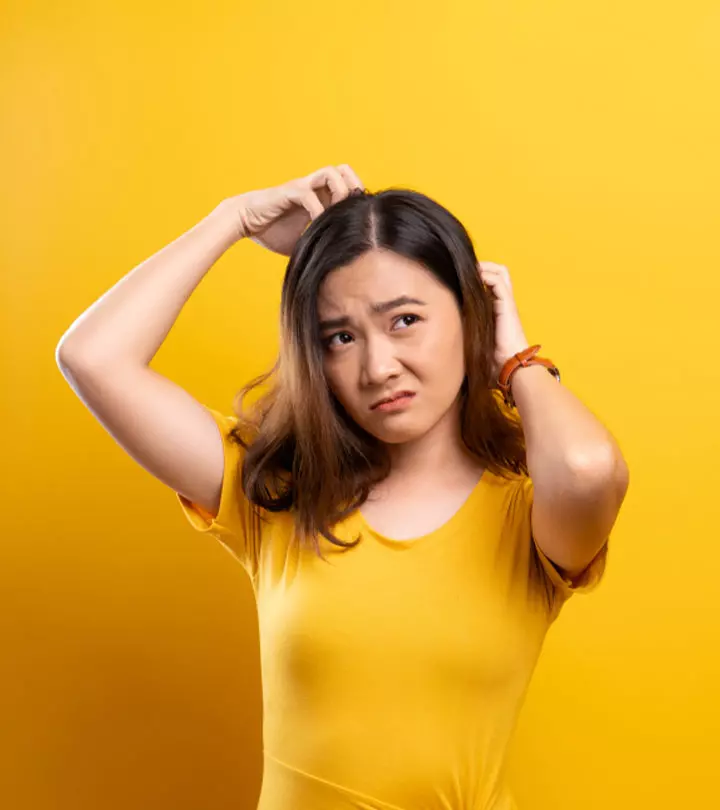
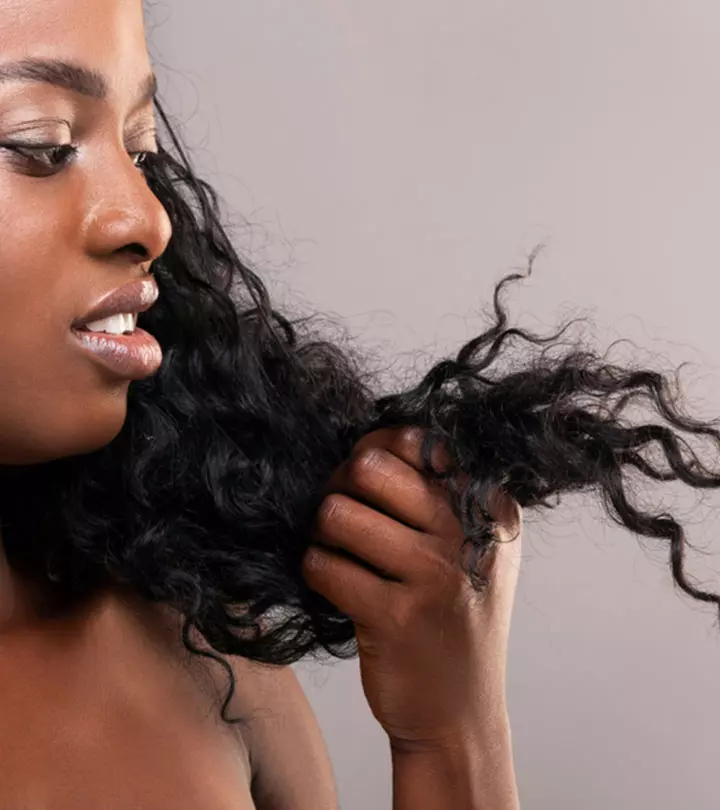
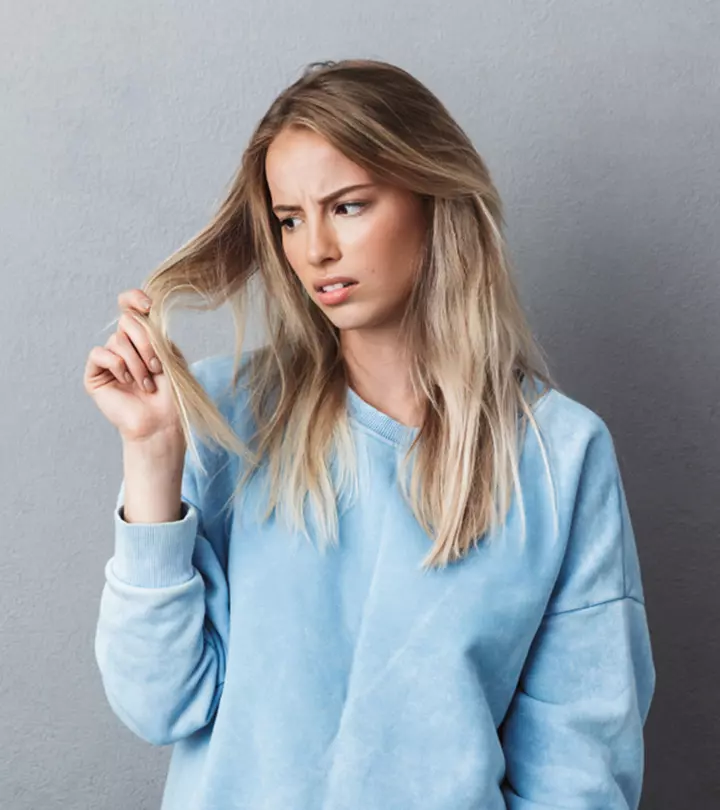

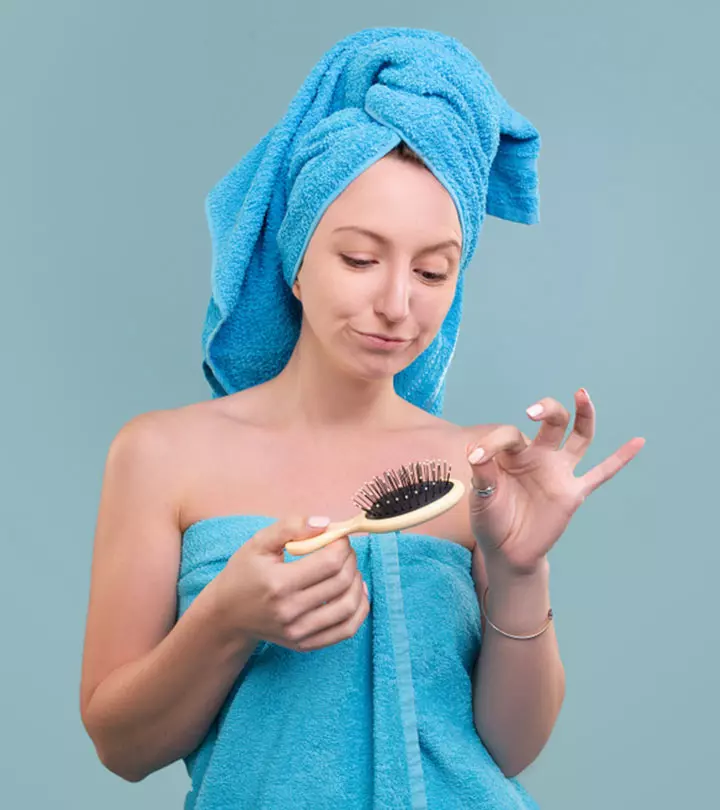

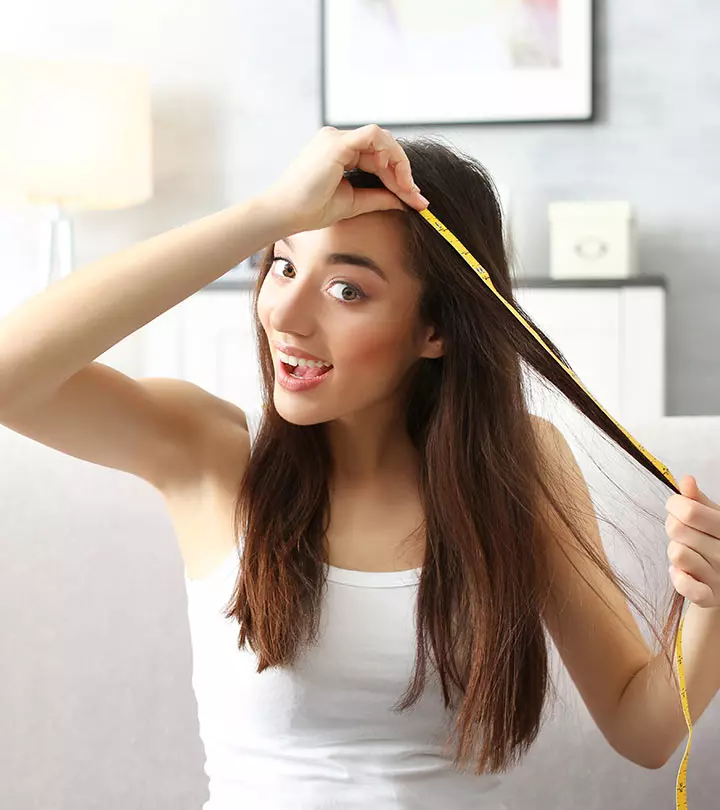

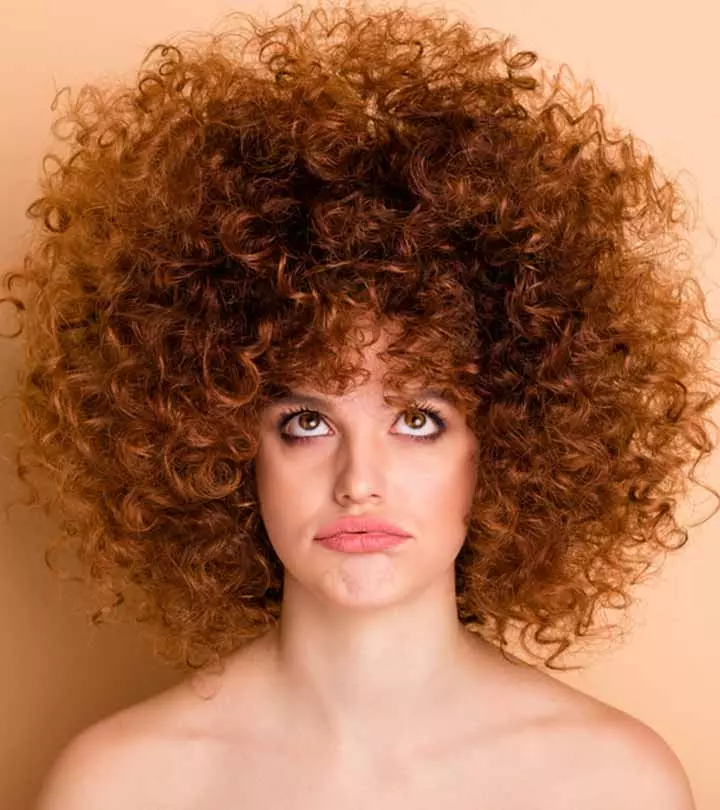


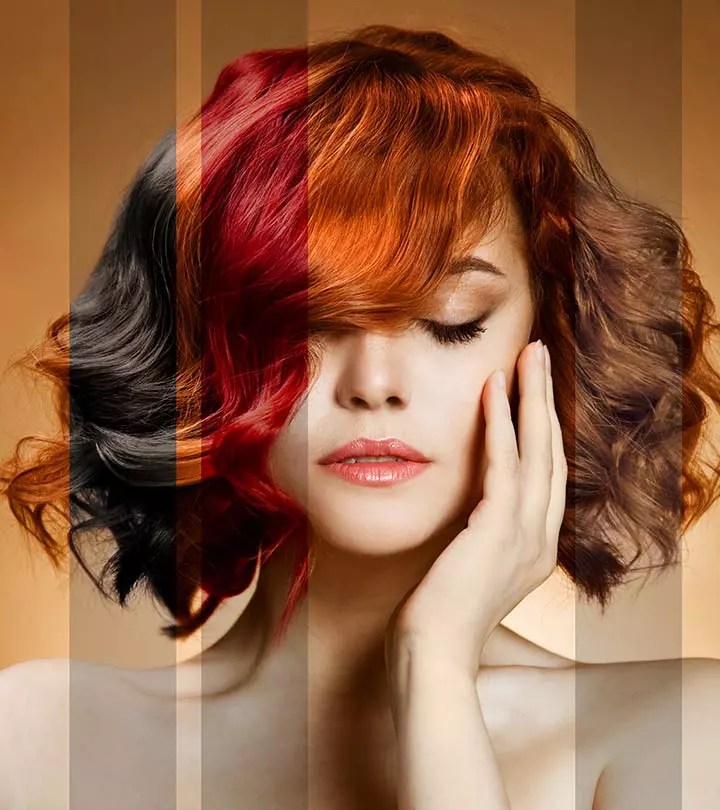
Community Experiences
Join the conversation and become a part of our empowering community! Share your stories, experiences, and insights to connect with other beauty, lifestyle, and health enthusiasts.